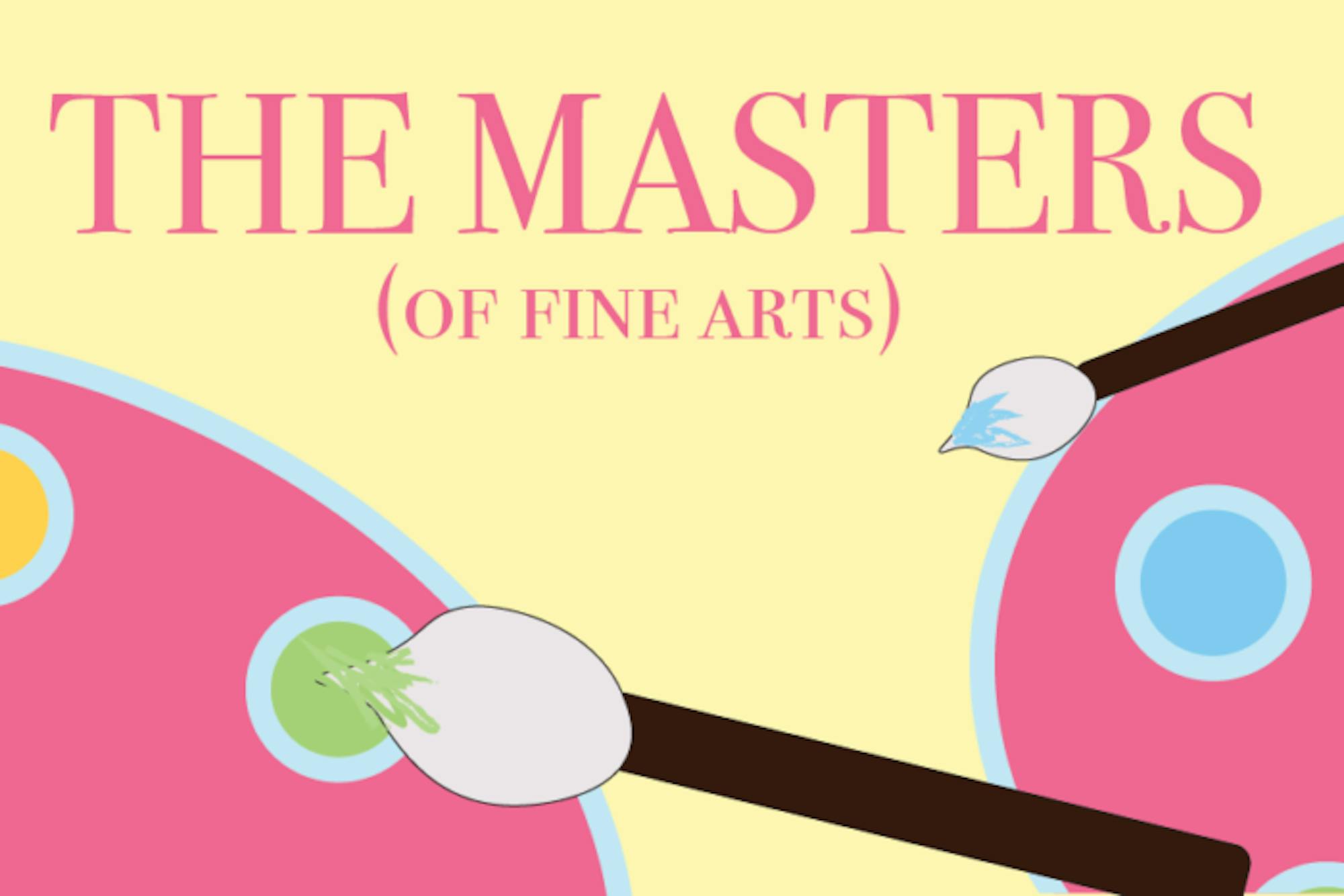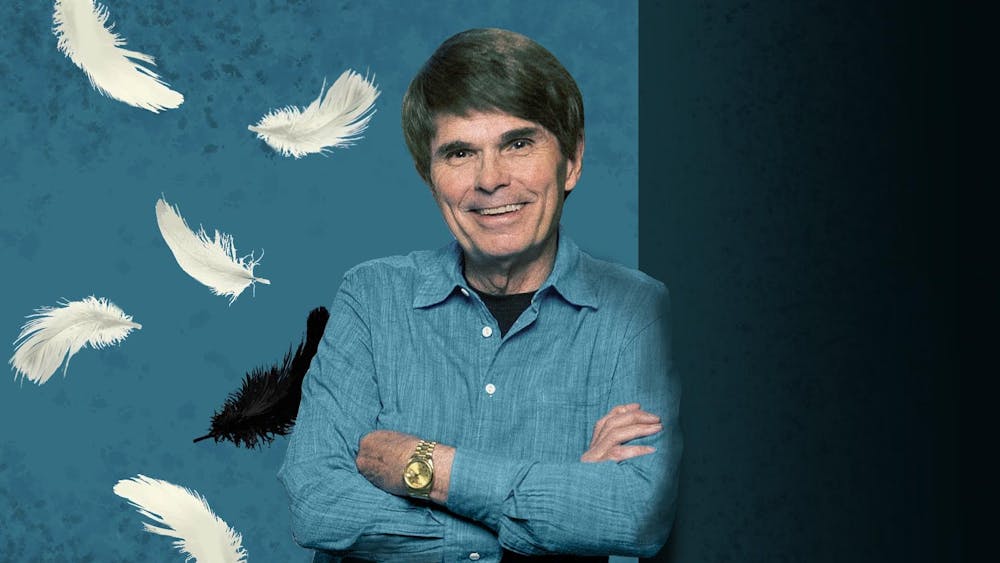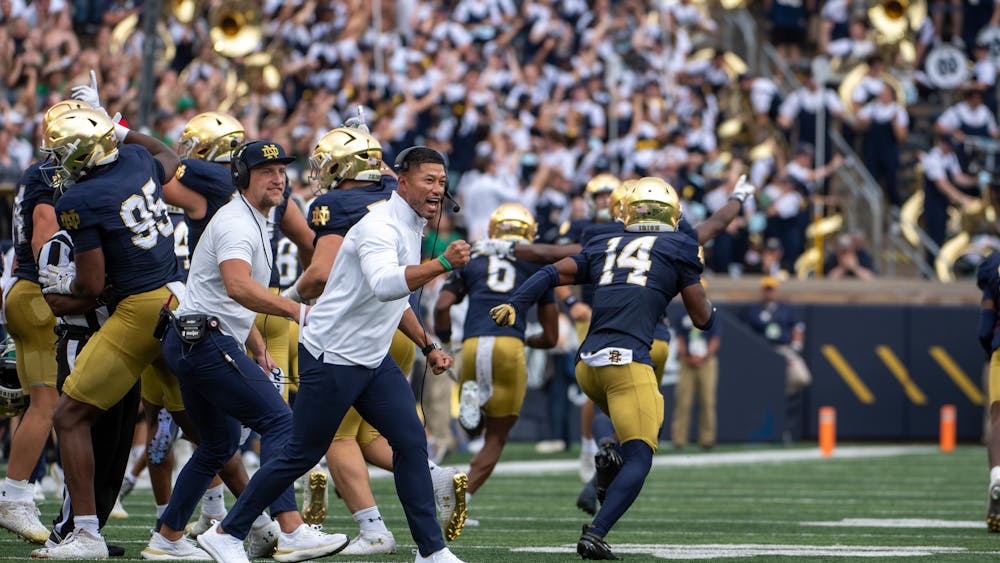
Notre Dame has a lot of best kept secrets and the Snite has often been listed as one of them. This spring, four Masters of Fine Arts (MFA) students displayed their art theses among the other collections of art in the Snite. The exhibit covered all aesthetics, from dainty mushrooms and flowers fashioned from porcelain, to a giant multi-media sculpture featuring a toy drone, heavy chain and shadow of a bomber. In addition to showing off the technical talents of the four student artists, it provides a space for all ND students to consider issues facing the world we will live and work in when we graduate.
When visitors enter the MFA exhibit, bright colors and alien-esque human shapes draw them towards James Ostrander’s collection of oil paintings. This collection won him the Walter R. Beardsley cash prize by the Museum Director and, upon taking in his work, it is clear to see why. Ostrander’s human forms in each of his paintings take on both classical and abstract qualities. Each painting features portions of the human body that are anatomically correct. However, when Ostrander paints the heads of his subjects, he simply paints a nude orb with a smiley face. In some paintings, such as “Meatsack Sisyphus,” the anatomical body parts are few and far between and the main figure looks almost like an uncooked chicken breast. It jars the viewer. Similarly, the combination of nature, the body and manmade trash are equally unsettling. My favorite painting from this collection, “Drainage Ditch Narcissus,” depicts a human figure lying in blue water. Green grass and blue sky are cut by a drainage pipe. The blue water is polluted by a rainbow oil stain that seems to surround the figure like a halo. Reality and fantasy meet in this jarring collection that speaks on the effects of climate change and our relationship with nature.
The second collection of the MFA exhibit featured the whimsical ceramic work of Jonathan Kusnerek. The porcelain sculptures in his collection featured both dainty and strong elements. Pansies and mushrooms danced around thorns and a stick star that seemed to be straight out of “The Blair Witch Project.” Nature merges with the mystical in many of the sculptures. One work, “Lover’s Eye,” depicts a big brown eye surrounded by tiny purple flowers and framed by two butterfly wings. The sculpture combines the dainty — butterfly wings and flowers — with the big brown eye. Gold paint gives the sculpture a rich feel. Kusnerek’s descriptions of the art pieces also detail the emotions that drove him to create this piece and give the viewer a deeper understanding of the origin of these pieces.
The third installment of this exhibit swings a full 180 from the magical ceramics to an industrial app and product design. Peter Dore’s app, Pulse, aids people struggling with substance abuse. The main feature of the app is a breathing exercise that users can access when they may be experiencing a craving. Dore also used his industrial design background to create a patch to go with the app that helps the user curb their cravings. The display looks less artsy and more like a marketing pitch, but it demonstrates that art exists not only in museums but also on cell phones where people can use it every day.
Lastly, the cold, heavy lines of Benjamin Craigsie’s “Cost Benefit” sculpture close out the exhibit. The work addresses a dark side of technology, specifically how the sale of watered down technology used in commercial drones (you know like the ones your little brother or cousin had on the top of their Christmas list) is a shadow of our investment in military technology used for violence and destruction. In his sculpture, the connector between the toy drone and the war drone is a thick metal chain. The links may represent the information that Craigsie provides in a supplemental video. The video shows images of drone strikes and war scenes. The exhibit makes the viewer think about how their day-to-day actions may affect the lives of people on the other side of the world.
The art in the MFA exhibit moves its viewers to reevaluate their lives. The most wonderful thing about this exhibit is that it is free. Viewers can breeze through, but I would suggest viewers to take a break from their grind, whether it be finals or a job, and just take in the challenges these artists offer.
Read More
Trending









